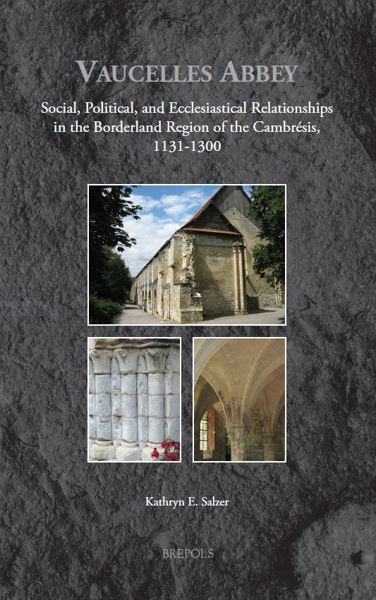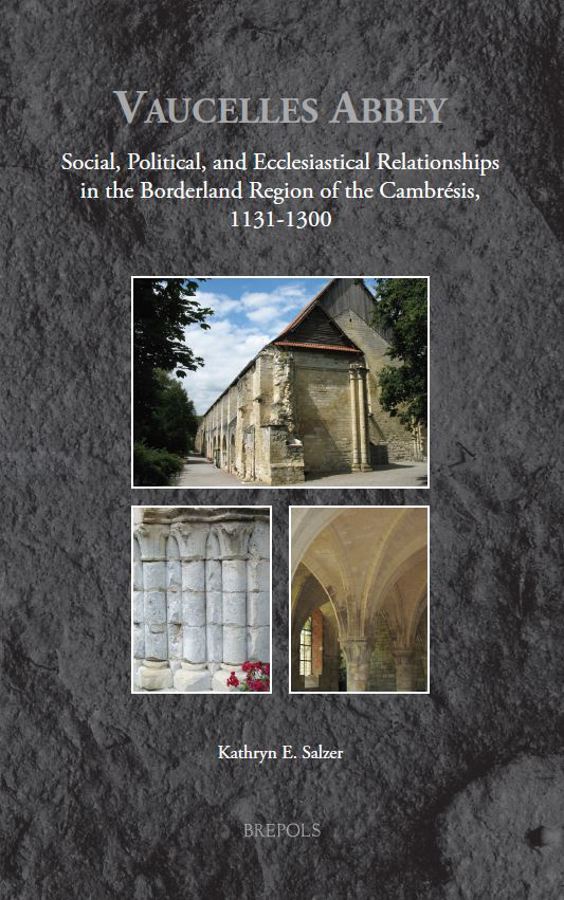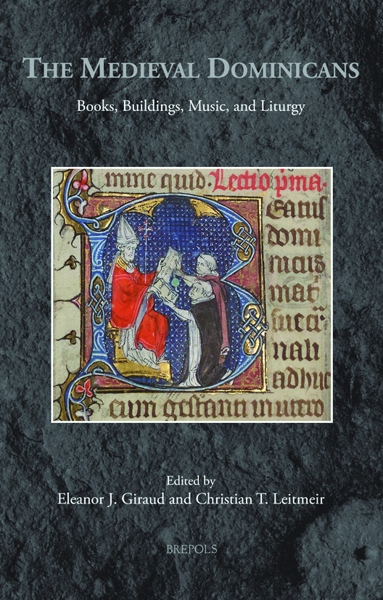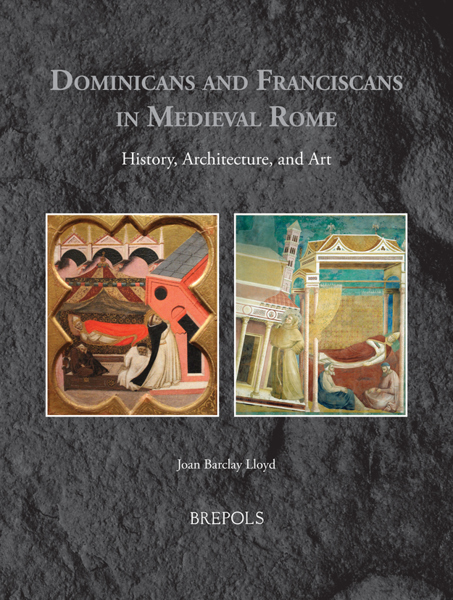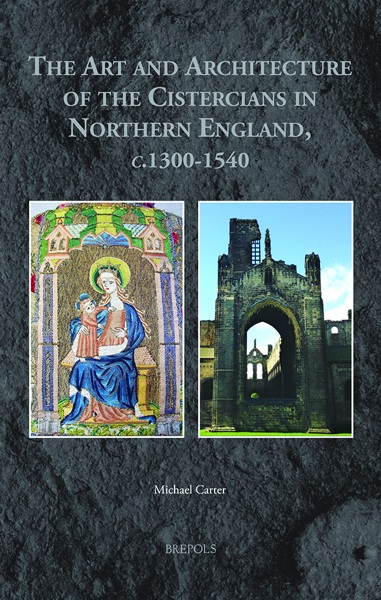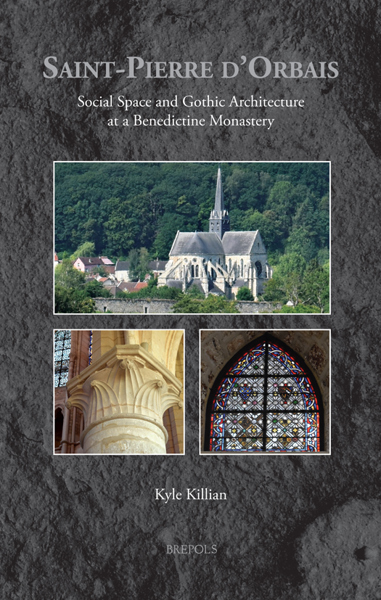
Vaucelles Abbey
Social, Political, and Ecclesiastical Relationships in the Borderland Region of the Cambrésis, 1131-1300
Kathryn Salzer
- Pages: 366 p.
- Size:156 x 234 mm
- Illustrations:5 b/w, 7 tables b/w., 3 maps
- Language(s):English
- Publication Year:2017
- € 110,00 EXCL. VAT RETAIL PRICE
- ISBN: 978-2-503-55524-9
- Hardback
- Available
- € 110,00 EXCL. VAT RETAIL PRICE
- ISBN: 978-2-503-56960-4
- E-book
- Available
This study examines Vaucelles' political, social, and economic life in order to explain how the Cistercian house (a direct daugher-house of Clairvaux) flourished in the borderland region of Cambrésis in the twelfth and thirteenth centuries.
"Kathryn Salzer provides an accomplished study of the early Cistercian monastery at Vaucelles in the diocese of Cambrai (...)" (Constance Hoffman Berman, in Sehepunkte, 18/9, 2018)
“Salzer’s book on Vaucelles Abbey provides an ambitious and useful counterpoint to the predominant trend of thematic approaches to the study of Cistercian monasticism in the European Middle Ages (…) It is so easy for these kinds of themes to be seen as a backdrop to the study of loftier developments in monastic liturgical practice and spirituality, but Salzer refreshingly places Vaucelles’ social relationships, which evidently had a greater bearing on its ability to survive and prosper after its creation than its Cistercian affiliation, as the foundation to developing any understanding of its wider religious identity.” (Suzanne G. Coley, in H-France Review, 18/198, 2018)
“There is an extensive bibliography with an index of manuscripts that will form a valuable resource for any historian. A list of abbreviations is also very helpful as it includes measurements and coinage referred to in primary sources. There is also a note on orthography and place names. Every medievalist will find this book useful in the field of history, but it also should inspire the closer study of smaller religious houses and communities in order to better understand their process of survival and their complex relationships both internal and external, as an expression of European society beyond the focus on religious reform, enabling scholars to address larger historical questions.” (Stephanie L. Hathaway, in Cerae: An Australasian Journal of Medieval and Early Modern Studies, 5, 2018, p. 147)
“(…) this book demonstrates the extent to which studies of individual abbey beyond the most famed houses can help clarify the monastic history of the high Middle Ages.” (Jay Diehl, in The Medieval Review, 04/09/2019)
“Damit eignet sich die Studie über Vaucelles als ein Musterbeispiel für eine breit angelegte Untersuchung der vielfältigen Aspekte einer erfolgreichen zisterziensischen Gründung in einem in jeglicher Hinsicht dynamischen Spannungsraum. Eine gelungene mikro- wie makrohistorische Gesamtschau, die durch ein umfassendes Register erschlossen wird.” (C. L., in Deutschen Archiv, 74/2, 2018, p. 937)
« On se réjouira de la publication du livre de K.E.S. À l’heure où la monographie de monastère est un genre rare, et rare parce que peu considéré, l’A. montre tout l’intérêt, au contraire, que l’histoire religieuse, économique, politique… peut tirer de l’étude approfondie d’un cas. Espérons que son exemple sera suivi par d’autres, tant il y a encore maintenant de monastères médiévaux qu’on ne connaît guère que par la Gallia Christiana ! » (Benoît-Michel Tock, dans Le Moyen Âge, 3-4, 2019, p. 729)
“Salzer’s compelling study of the abbey of Vaucelles sheds light on a lesser known Cistercian foundation, and adds to our understanding of the Cambrésis and the borderland region. It is a valuable contribution to both monastic and medieval studies.” (Carlos López, in Parergon, 36/1, 2019, p. 244)
“(…) it is with gratitude and delight that we encounter the broadly-framed yet deeply detailed study by Kathryn E. Salzer on this great Cistercian abbey (…) an admirable and thorough study on monastic administration.” (Caroline Bruzelius, in Cîteaux, 70/3-4, 2019, p. 394-396)
Founded in 1131 by the castellan of Cambrai, Vaucelles Abbey thrived in a borderland region, where German emperors, French kings, Flemish counts, bishops of Cambrai, and the Cistercian Order all had active interests. To understand how Vaucelles flourished, we must look at the relationships that the house created and fostered with various international, regional, and local individuals and institutions. Vaucelles used these connections to protect the vast patrimony that the monks created in the two centuries after its foundation.
This study asserts that three principal factors influenced the foundation and development of Vaucelles. First, the abbey was fortunate in its local support, beginning with the castellan family and expanding to include numerous regional families and the bishops of Cambrai. Second, the abbey was established in a political borderland, a geo-political situation that Vaucelles survived and actually turned into a positive feature of its development. And finally, Vaucelles was a Cistercian monastery, a direct daughter house of Clairvaux. Vaucelles’ Cistercian observance fostered relationships that were particularly significant to the abbey’s development from the late twelfth century onward. These factors offer exceptional tools for demonstrating many features of Vaucelles’ political, social, and economic life during the twelfth and thirteenth centuries.
Lists of Illustrations List of Abbreviations
Place and Proper Names
Acknowledgements
Chapter 1. Introduction
Chapter 2. Historiographical Context
Chapter 3. Physical Location and Politics: The County of the Cambrésis, the Diocese of Cambrai, and Vaucelles
Chapter 4. Cistercian Economic Practices and the Agricultural Foundation of Vaucelles
Chapter 5. Gift Patrons and Resultant Interactions
Chapter 6. Consolidation and Conflict
Chapter 7. Cistercian Relationships
Chapter 8. Conclusions
Bibliography
Index of Manuscripts
General Index
